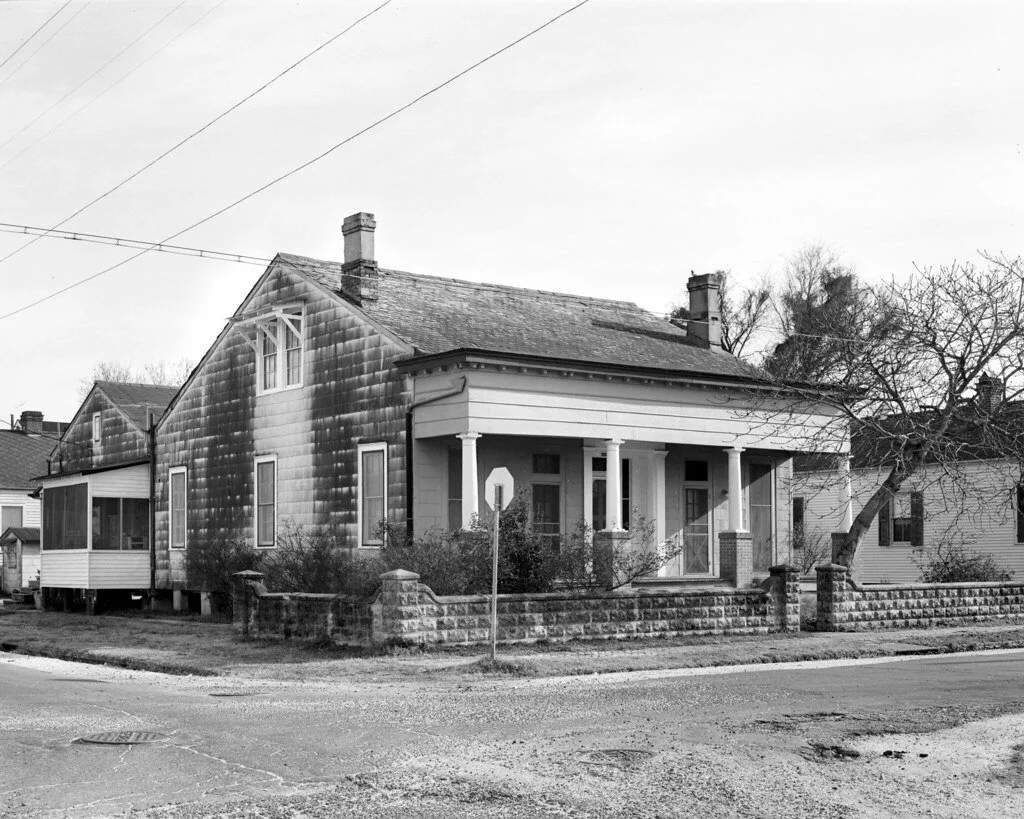PRES 6130 | Archival and Historical Research Methods
Professor Heather Veneziano
This introductory course in archival and documentary research focused on property records and architectural changes over time. It included site visits to local archives and a final project tracing the history of a New Orleans property using primary sources. I selected the house at 835 Dante Street in the Carrollton neighborhood—a rare surviving example of a Creole Center Hall cottage with Greek Revival features. The lot was originally owned by John Hampson, an engineer for the New Orleans and Carrollton Railroad Company; a nearby street in Carrollton still bears his name. The house was built in 1872 for Feliciana Tilano Carrejolles and still features a dual-structure layout that emphasizes the separation between served and service spaces. Notably, the property was predominantly owned by women—a rarity in the 19th and early 20th centuries. In the early 1900s, it was purchased by Francesco Paolo Serio, a Sicilian immigrant and Carrollton property holder, who passed it down to one of his daughters. The home has remained in the family ever since, inherited from mother to daughter across generations. In the early 20th century, the house was modified with Craftsman-style elements, which were later removed to restore its original architectural form. It was briefly subdivided into two units, with the main house—the larger side—rented out, but has since returned to single-family use. Today, the home is used as a weekend house by Serio’s descendants, who keep a copy of the manuscript documenting its history.






























